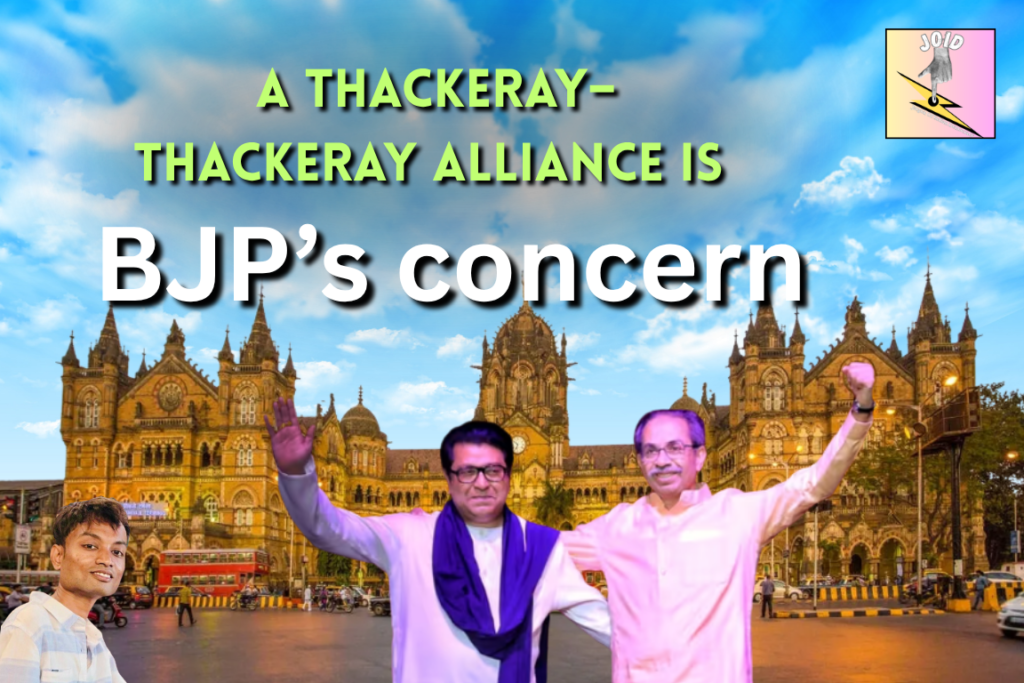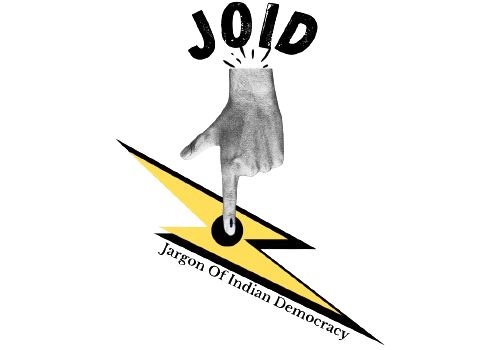
By Mayur Gavture | Political Consultant & Legislative Associate
In Maharashtra’s chaotic political theatre, symbolic gestures often foreshadow seismic realignments. When Uddhav Thackeray and Raj Thackeray finally appeared on stage together in July 2025 after decades of political estrangement, it wasn’t just a nostalgic photo opportunity it was the early rumble of a political thunderstorm. Should this emotional reunion crystallize into a formal alliance, it could fundamentally dismantle the BJP–Shinde–Ajit Pawar triumvirate, beginning with the most critical battleground of all: urban Maharashtra.
The numbers speak louder than speculation. In the 2024 Lok Sabha elections, Uddhav Thackeray’s Shiv Sena (UBT) secured 9 seats with a 16.5% vote share, amounting to nearly 9.57 million votes statewide. The BJP, while securing the highest vote share at 26.2%, managed only 6 seats an underwhelming return for a party that once dominated the state. The MVA alliance comprising UBT, Congress, and the Sharad Pawar-led NCP walked away with 30 out of 48 seats, establishing itself as the default alternative. In the Vidhan Sabha elections held later the same year, the BJP’s tally of 132 seats (26.77%) was formidable, but the cracks were evident. Shiv Sena (UBT) secured only 20 seats, largely concentrated in urban centers, while the MNS chose to sit out but remained ideologically and emotionally relevant among core Marathi voters.
The BMC elections, long overdue, will now become the decisive arena for this unfolding political experiment. In 2017, Shiv Sena won 84 out of 227 seats in the BMC, while the BJP stunned observers by jumping from 31 to 82 seats, largely riding on fragmented opposition and Marathi voter apathy. The MNS, once a storm sweeping the civic streets of Mumbai, was reduced to a mere 7 seats from its 2012 tally of 28. However, this decline never erased Raj Thackeray’s cultural footprint. In Marathi-dominated wards like Dadar, Naigaon, Lalbaug, Kalachowki, and Mahim Raj remains a name invoked with intensity, not nostalgia.
The core of this potential alliance lies in an undeniable demographic reality: the dominance of Marathi voters in urban Maharashtra. Greater Mumbai alone has 4.2 to 4.5 million Marathi-speaking voters, forming nearly 38% of the electorate. In Thane, Pune, and Nashik, this proportion ranges between 45–55%. These voters once defined the rise of the Shiv Sena, and later briefly flirted with the MNS. But over the past decade, they’ve been caught in a confused identity crisis split between UBT, BJP, Shinde Sena, or staying home on election day. A Thackeray–Thackeray alliance has the potential to realign this fragmented sentiment into a unified electoral wave.
Projections suggest that if Uddhav and Raj contest together in the upcoming BMC elections, they could secure a commanding 110 to 120 seats well above the majority mark of 114. This would drastically reduce the BJP’s tally to 60–65 seats, erasing the momentum it built since 2014. In Thane’s Municipal Corporation, the alliance could flip 10 seats, capitalizing on MNS’s historic strength in areas like Kalwa and Kalyan East. Across Mumbai’s 36 Assembly constituencies, a Marathi consolidation could raise the UBT–MNS tally from around 20 seats to 35 or even 40. Even in the Lok Sabha, where the BJP currently holds seats like Mumbai North and Mumbai North East, a unified Marathi vote could cost the BJP at least 2 urban seats -seats it can’t afford to lose.
More crucially, this alliance would deal a death blow to Eknath Shinde’s faction. Shinde’s rise post-2022 was built on exploiting the void left by the Shiv Sena split. But if the original Balasaheb legacy (Uddhav) and the charisma of Marathi manoos champion (Raj) come together, Shinde becomes politically irrelevant in the very urban spaces he claims to control. Similarly, Ajit Pawar’s bargaining power within the BJP-led coalition would collapse. With no hold over urban Maharashtra and an increasingly alienated rural voter base, his relevance would shrink to sugar factories and internal NCP boardrooms.
This reunion is not just about arithmetic; it is about emotional resurgence. Raj Thackeray’s oratory and raw charisma have always struck a chord with Marathi youth and middle-class voters. Uddhav, on the other hand, carries institutional credibility, administrative experience, and the emotional sympathy of being ousted by betrayal. Together, they represent the two halves of Balasaheb’s legacy: one defiant, the other dignified. Their unity isn’t just strategic it’s ideological. It rekindles the “Marathi Asmita” that once brought Mumbai to a standstill, and has the potential to ignite a political wildfire across urban Maharashtra.
The BJP may pride itself on booth-level precision, caste engineering, and organizational discipline but none of that can withstand a united emotional wave among a historically assertive voter base. A rejuvenated Thackeray front won’t just contest elections it will wage a cultural and political battle for the soul of Maharashtra. It will corner the BJP ideologically, weaken it numerically, and embarrass it strategically. The Marathi manoos is no longer divided and that changes everything.
In conclusion, this is not a soft alliance built on convenience. This is a hard reset. A reassertion of Marathi political identity against a regime that tried to conquer urban Maharashtra through calculated fragmentation. The Uddhav–Raj alliance, if it materializes, will not be remembered as a comeback. It will be remembered as a reckoning for the BJP, for Eknath Shinde, and for every powerbroker who thought Marathi votes could be taken for granted. The game has changed. And this time, Mumbai isn’t voting for a party. It’s voting for its pride.
Our other articles : Does Bengal Have a PR Problem? | A scenario of “What ifs” in Bihar | German Chancellor Fellowship discussion |Mission 58: How Congress Plans to Flip Bihar | Bengal Bellwether – 2 | Bengal Bellwether – 1 | India United – India’s message is loud & clear on terrorism a diplomatic strike on terror| The Indian Stock Market is bleeding | SUPER NARI – 25 | Caste and the Ballot in Bihar | The suicidal mission of Pakistan’s so called ‘Establishment’ | Who is Responsible for Bihar’s Migration Crisis? | Why Congress must go solo in Bihar | Jai Bhim | Old is Gold , Resurrection of ‘Dynasty Politics’ | China Faces 125% Tariff by USA: A Strategic Opportunity for India | When the Accuser Becomes the Accused
Books that enriches – India after Gandhi by Ramchandra Guha | Contesting democratic deficit by Salman Khurshid | The election that surprised India By Rajdeep Sardesai

Mayur Gavture is a Political Strategy Consultant and currently working as the legislative & Political Associate at the Office of Hon. Member of Parliament Shri Namdev Kirsan. He also has interests in Election Campaign , Legislative Policy – Advocacy & Governance Advisor.
